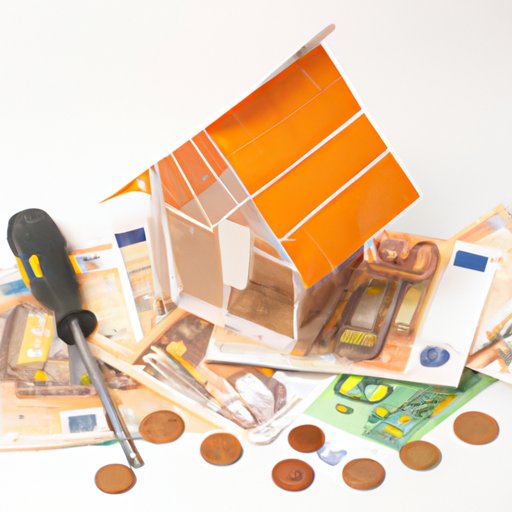Introduction
Building your own home can be an exciting and rewarding experience, but it can also be an expensive one. There are a lot of factors that come into play when determining the cost of building a house. Luckily, in this article, we aim to break down the costs involved in building a home, so you know what to expect and can make an informed decision when deciding to build your dream home.
Breaking Down the Costs: A Comprehensive Look at Building a House
Section 1: Land Purchase
The first step in building your dream home is purchasing a plot of land. The location of the land can greatly affect its price, as well as its size and access to amenities such as schools, hospitals, and shopping centers. The average cost of land can vary across different regions, ranging from $3,000 to $150,000 per acre. Therefore, it is crucial to do your research and find the best deal possible that suits your budget and needs.
Section 2: Construction Materials
The cost of constructing a house includes both raw materials and finish materials. Raw materials such as lumber, concrete, and steel are used in building the structure of the house while finish materials like paints, flooring, windows, and roofing, among others, are necessary for completing the house. The cost of building materials varies depending on the quality, design, quantity, and seasonal fluctuations. The cost of raw materials ranges from $80,000 to $100,000 while finish materials range from $30,000 to $50,000.
Section 3: Labor Costs
Labor costs are another significant factor when building a home. These costs include the hiring of architects, engineers, contractors, and construction workers that contribute to the build of the house. The cost of labor varies depending on the experience and skill level of the worker, the complexity of the job, and the location of the construction site. The labor cost can range from 25% to 50% of the total construction cost. The average cost for construction labor ranges from $60,000 to $150,000.
Section 4: Permits and Fees
Before building a home, it is essential to obtain the required permits from the local government. These permits include zoning and building requirements, among others, and come with a cost. Permit fees depends on the laws and requirements of the local government. The average cost for government permits and fees ranges from $4,000 to $10,000.
Section 5: Unexpected Expenses
Building a home also comes with unexpected expenses that could arise due to weather issues, rising construction costs, or changing laws and codes. It is advisable to budget for such unexpected expenses to avoid unexpected costs that could significantly affect a project’s budget. It is recommended to factor about 10% to 20% of the total construction cost for unexpected expenses.
Tips for Budgeting Your Home Build
Building your home does not have to break the bank. There are different ways to reduce your home build cost, including choosing more affordable materials, working with a local architect or builder, being flexible with your designs, and balancing quality with cost. Using recycled materials and off-the-shelf products can save a considerable amount of money on building materials. It is also helpful to work with a local architect or builder who knows the ins and outs of the local construction industry, its codes and laws. However, one should maintain a balance between cost and quality to avoid additional costs in future repairs and maintenance.
The Hidden Costs of Building a House
Building a home comes with additional costs that are often overlooked in the initial budget. These costs include landscaping, fencing, and outdoor features, as well as utilities and hookup fees, such as sewer, gas, water, electric, among others. The ongoing maintenance and repair costs, such as heating and cooling, also contribute to the total cost of a home build.
Comparing the Costs of Building vs. Buying a House
Lastly, it’s essential to compare the costs of building a home versus buying a home before deciding on the best mode for you. While building a home offers flexibility in design and more personal touches, it can be expensive and time-consuming. Buying a house, on the other hand, comes with fewer obligations on the part of the buyer, but it can have hidden costs such as renovations and repairs that add up. It is essential to compare the upfront and long-term costs of both options before deciding on the best one for you.
Understanding Regional Variations in Home Building Costs
The average cost of building a home varies across different regions. The rural areas have lower construction costs due to factors such as labor and materials availability, while urban areas and cities have a higher cost of building due to scarce land availability and higher labor costs. It is essential to have an understanding of the different costs in different regions and cities before starting a project to avoid overspending.
Conclusion
Building a home is a great investment that requires a lot of planning, research, and budgeting. Being informed about the costs involved in building a home, knowing where to budget effectively, and anticipating unexpected expenses helps you stay within your budget and avoid regrets. Remember, it’s always better to be over-prepared than under-prepared when it comes to building a house.
(Note: Is this article not meeting your expectations? Do you have knowledge or insights to share? Unlock new opportunities and expand your reach by joining our authors team. Click Registration to join us and share your expertise with our readers.)
